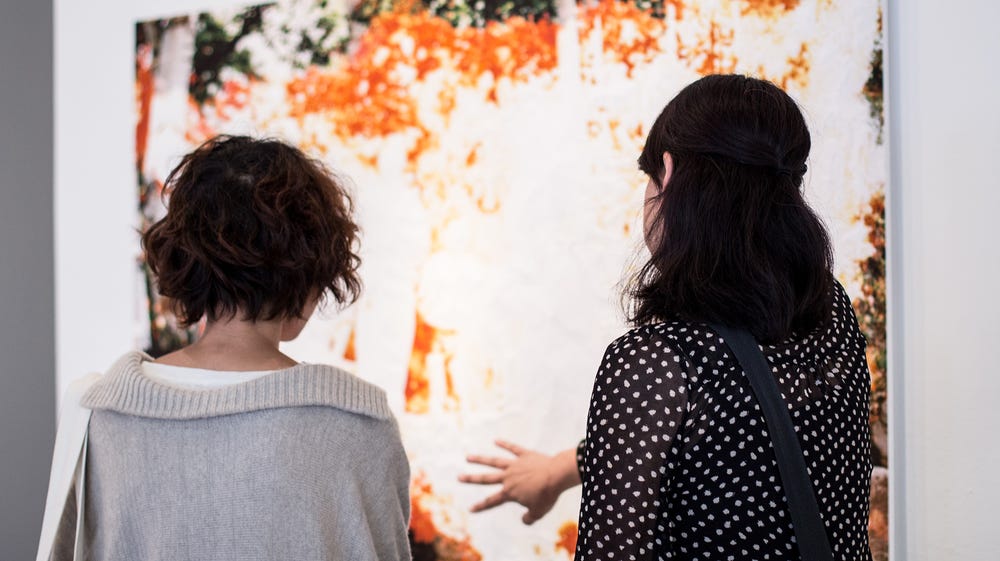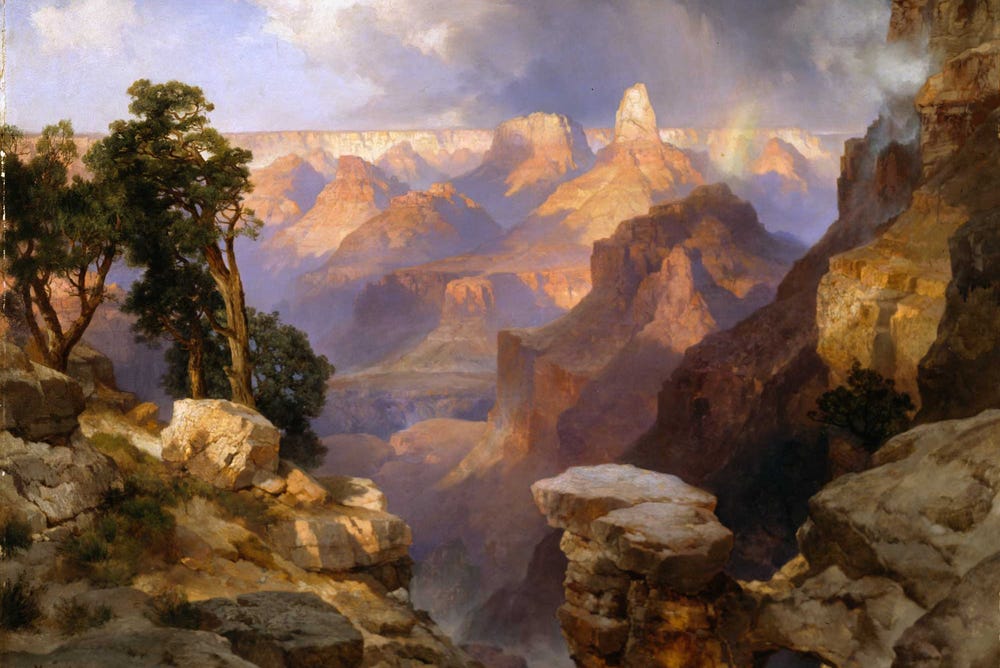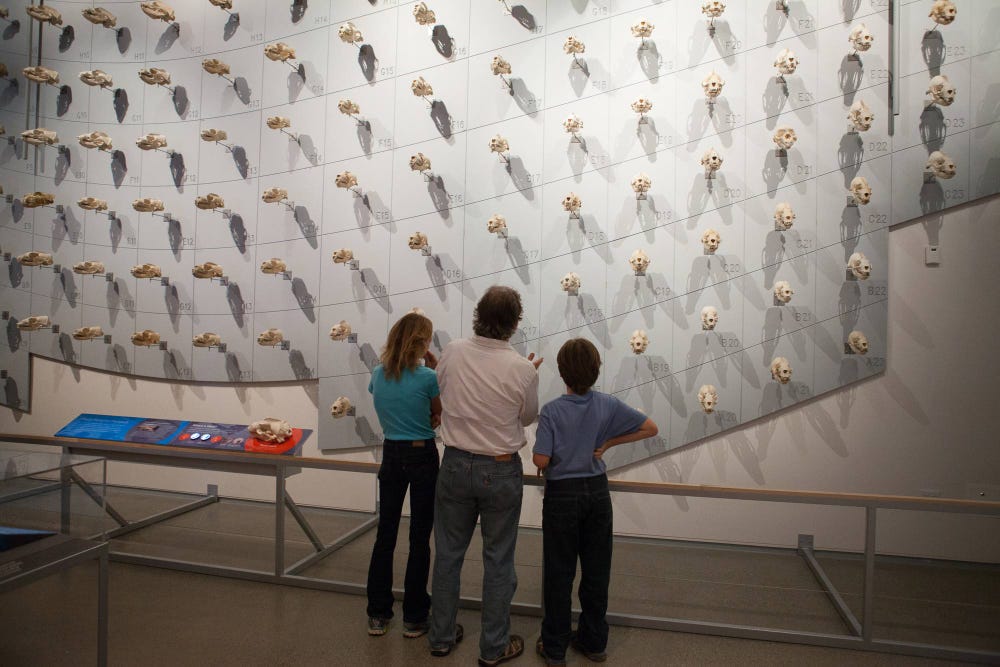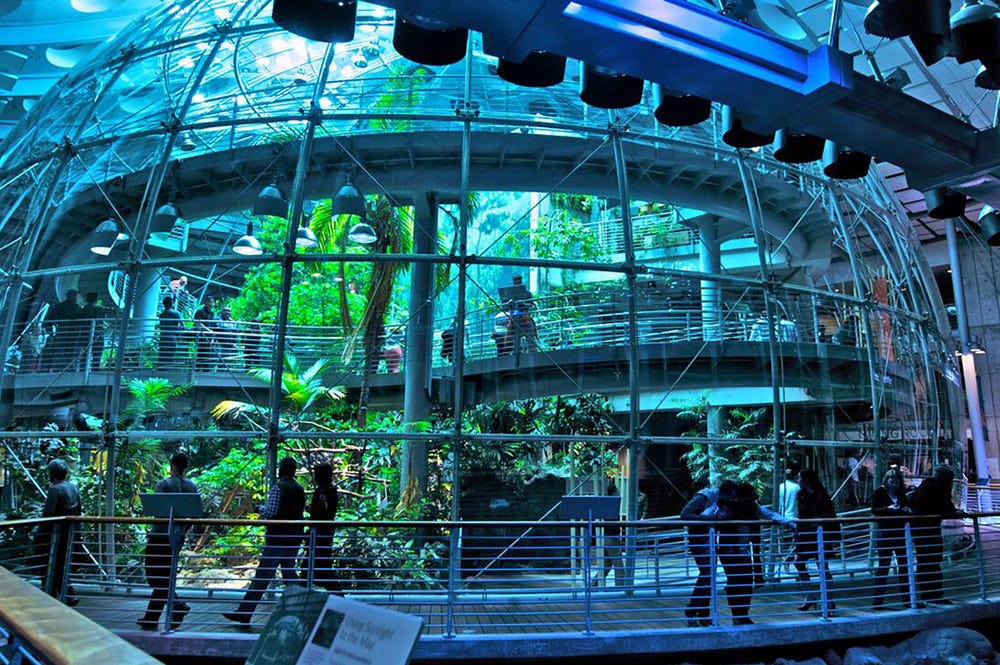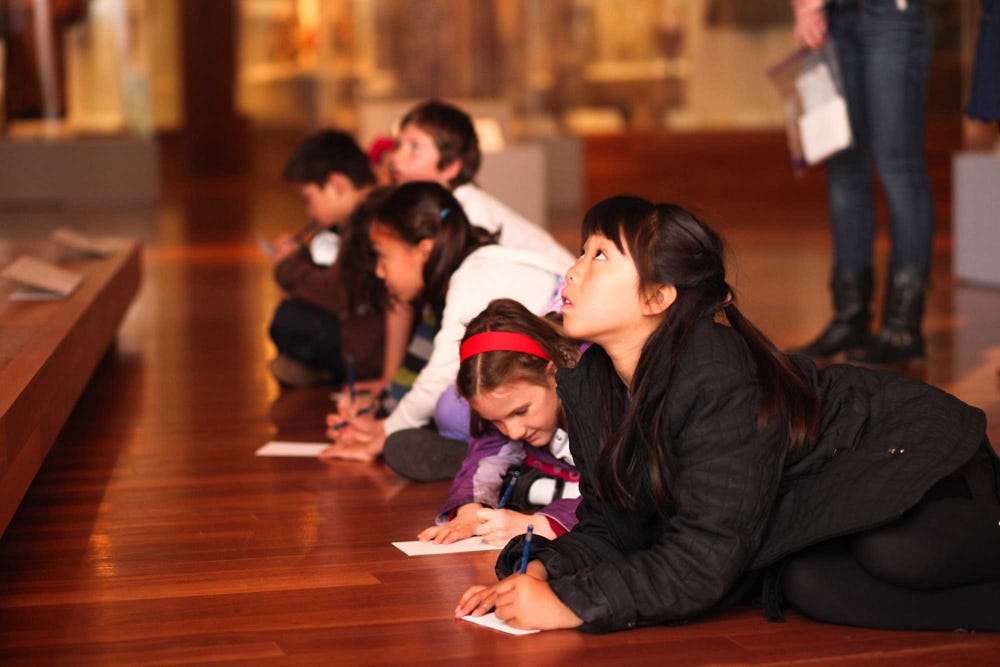Art + Science
The following lessons let students of all ages explore how these two fields employ observation, inquiry, and creativity. Each lesson provides resources to use in the classroom and opportunities to explore our galleries.
To learn more about our pedagogical approach, click here.
-
Expeditions
In the 19th century, various scientists who held expertise in studying rocks, plants, and animals came together to form expedition teams for documenting the American West. Artists commonly worked as part of the team, making detailed sketches of the landscape. Many artists also created epic paintings based on these studies upon returning to their studios. These artworks influenced how government officials in Washington DC and the American public perceived and valued the Western landscape.
Through this lesson students work as an expedition team and learn how to translate environmental data into compelling messages that can shape the way their classmates understand a specific location. Students practice skills such as observation, interpretation, and communication while exploring the environment of Golden Gate Park. They then synthesize information from their discoveries by creating a public service announcement that focuses attention on an underappreciated aspect of the park.
-
Patterns
This suite of activities focuses on the concept of pattern in both art and science, and is designed for students in the lower elementary grades. These lessons work well independently as standalone activities, but can also be taught together as a full unit exploring patterns.
Before using the lesson plans, read the Patterns Thinking Frame document, which provides a simple framework to support and deepen children’s thinking. Students can use this tool as a consistent way to think about patterns in any context and subject area.
The lesson plans below are designed to develop different skills within this framework. Pattern or Not? focuses on recognizing patterns. The Recognizing and Describing Patterns activity further builds that skill and adds tools for describing patterns. Both Footprints and Patterns and A Place to Call Home advance skills of interpretation and prediction in the contexts of art and science.
Patterns Thinking Frame (PDF)
Pattern or Not? (PDF)
Recognizing and Describing Patterns (PDF)
Footprints and Patterns (PDF)
A Place to Call Home (PDF) -
Where We Meet
This curriculum focuses on the thinking skills that connect artists and scientists and includes four student explorations, each with a designated theme, vocabulary word, skill, and career focus. You can implement these lessons over the course of four days, or make adaptations to create stand-alone activities.
In Exploration #1, students practice close observation and consider how naturalists might use this skill. After using their observational skills to study natural specimens and make scientific drawings, they then use their imaginations to create hypotheses based on observed characteristics and draw environments for their specimens.
In Exploration #2, students discuss the role of conservators in protecting museum objects. They set up an investigation to find out how effective different materials are in blocking sunlight and protecting a piece of construction paper from fading. The results of the investigation are revealed in Exploration #4.
In Exploration #3, students explore, analyze, and communicate about the exhibits on view at the California Academy of Sciences and the de Young, developing strategies that can be used to explore any art or science museum. Students compare and contrast the use of light in two very different gallery contexts and study how an architect might consider the role of light in an exhibit.
In Exploration #4, students analyze the results of their decomposition investigation from Exploration #2. They then use the knowledge they gained about the materials to create an artistic composition.
Exploration #1 (PDF)
Exploration #2 (PDF)
Exploration #3 (PDF)
Exploration #4 (PDF)
Student journal (PDF) -
Exploring the Highlands of New Guinea
Please note that this program is currently unavailable.
Exploring the Highlands of New Guinea is a collaborative educational program conceived by the Jolika Collection of New Guinea Art at the de Young in partnership with the Conservatory of Flowers, the California Academy of Sciences and the Enga Tradition and Transition Centre. This program uses resources from each partner institution to create an innovative and interactive experience for schoolchildren, families and the general public.
On your next visit to Golden Gate Park, discover the striking differences and surprising similarities between the New Guinea Highlands and the San Francisco Bay Area. Notice the temperature drop when you enter the Highland Tropics Gallery at the Conservatory of Flowers to see their exquisite display of New Guinea orchids. Then, walk over to the de Young to view a selection of Highlands artworks from the Jolika Collection of New Guinea Art.
You can reserve a discovery kit and order full-color field guides for a group tour. These include hands-on activities and curriculum developed with Bay Area Educators integrating art, science and literacy in support of California state standards. Alternately, you can explore the Highlands using the multimedia resources we offer on this website, including podcasts, children’s stories, magazine articles, video clips, and images of daily life, landscapes and ceremonies. We hope that this program will develop a greater understanding of environmental stewardship and conservation in our visitors.
